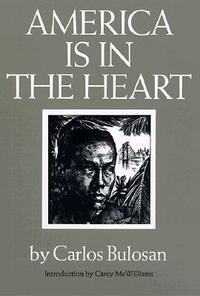You need to sign in or sign up before continuing.
Take a photo of a barcode or cover
challenging
dark
emotional
informative
reflective
sad
tense
medium-paced
Plot or Character Driven:
A mix
Strong character development:
Yes
Loveable characters:
Complicated
Diverse cast of characters:
Yes
Flaws of characters a main focus:
Yes
Moderate: Domestic abuse, Hate crime, Racism, Sexual violence, Violence, Police brutality
adventurous
dark
hopeful
reflective
sad
slow-paced
Plot or Character Driven:
A mix
Strong character development:
Complicated
Loveable characters:
Complicated
Diverse cast of characters:
Yes
Flaws of characters a main focus:
Yes
challenging
dark
inspiring
medium-paced
Plot or Character Driven:
Plot
Strong character development:
Yes
Loveable characters:
Yes
Diverse cast of characters:
Yes
Flaws of characters a main focus:
Yes
challenging
dark
tense
Read for U.S. Empire with Jana Lipman at Tulane University, Fall '24.
It is a fascinating text that helps us understand the Filipino perspective on the period between WW1 and WW2. Arguably Creative Non-fiction, pulling on what happened to many Filipinos in a composition of Bulosan.
It is a fascinating text that helps us understand the Filipino perspective on the period between WW1 and WW2. Arguably Creative Non-fiction, pulling on what happened to many Filipinos in a composition of Bulosan.
dark
emotional
reflective
sad
tense
medium-paced
Plot or Character Driven:
Character
Strong character development:
Complicated
Graphic: Domestic abuse, Hate crime, Misogyny, Racial slurs, Racism, Sexual violence, Suicide, Violence, Xenophobia, Police brutality, Trafficking, Grief, Murder
dark
emotional
reflective
sad
medium-paced
Plot or Character Driven:
Character
Strong character development:
Complicated
Loveable characters:
Complicated
Diverse cast of characters:
Yes
Flaws of characters a main focus:
Complicated
affecting account of the life of Filipino laborers and the organizing that took place all up and down the west coast in the post WWI and during WWII eras. The accounts of the canneries in AK were most interesting to me, since my grandfather had worked in the canneries around the same time but never talked about it. Sorta drags it's feet after a while, as Carlos runs from town to town trying to find jobs and organIze, fleeing in a hurry after being fired or violent retaliation. The wrap-up is a bit more hopeful, very reflective of that post-war hope of a more united America.
"It is but fair to say that America is not a land of one race or one class of men. We are all Americans that have toiled and suffered and known oppression and defeat, from the first In- dian that offered peace in Manhattan to the last Filipino pea pickers. America is not bound by geographical latitudes. America is not merely a land or an institution. America is in the hearts of men that died for freedom; it is also in the eyes of men that are building a new world."
"It is but fair to say that America is not a land of one race or one class of men. We are all Americans that have toiled and suffered and known oppression and defeat, from the first In- dian that offered peace in Manhattan to the last Filipino pea pickers. America is not bound by geographical latitudes. America is not merely a land or an institution. America is in the hearts of men that died for freedom; it is also in the eyes of men that are building a new world."
challenging
dark
emotional
sad
tense
slow-paced
Plot or Character Driven:
Character
Diverse cast of characters:
Yes
A classic. Bulosan gives us so much insight into history and immigration. Incredibly heartbreaking though and I probably wouldn't have finished it if I wasn't reading it with another person! Lots of other thoughts still pending.... excited to see how Elaine Castillo reacts/intervenes in her book America Is Not In the Heart.
Graphic: Alcoholism, Racial slurs, Racism, Violence
This seminal autobiographical novel is both a fascinating historical artifact and a compelling literary achievement. Carlos Bulson’s seems committed to making more of this work than just a harrowing chronical of degradations suffered and racisms endured, making it instead a broader meditation on Filipino-American identity, labor solidarity, and political struggle.
“I put the blame on certain Filipinos who had behaved badly in America,” the narrator reflects at one point, “who had instigated hate and discontent among their friends and followers. This misconception was generated by a confused personal relation to dynamic social forces, but my hunger for the truth had inevitably led me to take an historical attitude. I was to understand and interpret this chaos from a collective point of view, because it was pervasive and universal.”
This collectivist sensibility imbues the memoirish novel with a continued sense of urgency and relevance. I’m glad I read it.
“I put the blame on certain Filipinos who had behaved badly in America,” the narrator reflects at one point, “who had instigated hate and discontent among their friends and followers. This misconception was generated by a confused personal relation to dynamic social forces, but my hunger for the truth had inevitably led me to take an historical attitude. I was to understand and interpret this chaos from a collective point of view, because it was pervasive and universal.”
This collectivist sensibility imbues the memoirish novel with a continued sense of urgency and relevance. I’m glad I read it.








